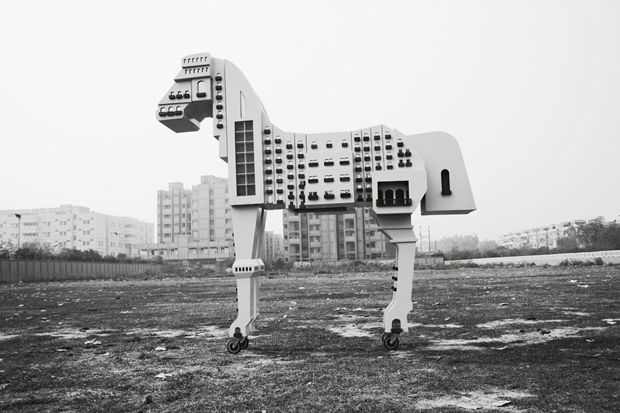
Why Delhi is an Art City of The Future
Solid institutions? Global connections? What does a city need for its artists to make art as good as this?
Art Cities Of The Future asserts that new art is no longer coalesced around the usual dealer cities such as Manhattan and London but is spreading and thriving worldwide, including in the so-called "Third World".
Take Delhi, for example, to which the book devotes a chapter. Although Delhi does not enjoy the same status of modern metropolis as Mumbai, as Geeta Kapur explains in her opening essay, there are good reasons why it has become a vortex for 21st century avant-garde activity. As India's capital, it has longstanding and liberal public institutions, including Delhi University and the Nehru Memorial Museum And Library, the sort that are necessary if new art is to be sustained and developed in a city.
{media2}
Delhi has a history of modernism stretching back to the 1950s, including artists like Satish Gujral and Ram Kumar. Sadly, it even has martyrs - the Safdar Hashmi Memorial Trust is named after a theatre activist killed by political opponents while campaigning for the Communist Party at a performance site.
For all its networks and artists' associations, Delhi art is by no means hermetically sealed off from the problems of the city itself. The artist Gigi Scaria's work is a response to the somewhat hectic urbanism of the city, in which rapid development and desperate poverty sit side by side. And so, his Someone Left A Horse On The Shore (2007) takes the form of a Trojan horse on wheels, made up of apartment-style windows, set against the barren backdrop of real-life apartment dwellings.
{media1}
The horse has been physically transported from the gallery to this dismal setting. Not only is this an example of art going out into the world but it is also a commentary on the way Delhi's poor, illegal occupants are "shifted around to mitigate the fears of crime and pollution that haunt the city's elite".
If this précis has left you eager for more, you can also read this brief overview Kapur's current exhibition. Also, if you're a Phaidon Club Member you can download a free sample from the book. Not a member yet? Join here. Or just go ahead and buy the book from the people who made it.